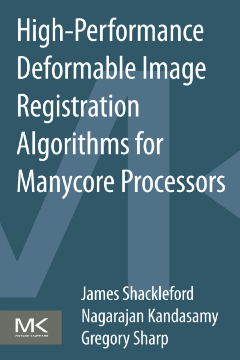
BOOK
High Performance Deformable Image Registration Algorithms for Manycore Processors
James Shackleford | Nagarajan Kandasamy | Gregory Sharp
(2013)
Additional Information
Book Details
Abstract
High Performance Deformable Image Registration Algorithms for Manycore Processors develops highly data-parallel image registration algorithms suitable for use on modern multi-core architectures, including graphics processing units (GPUs). Focusing on deformable registration, we show how to develop data-parallel versions of the registration algorithm suitable for execution on the GPU. Image registration is the process of aligning two or more images into a common coordinate frame and is a fundamental step to be able to compare or fuse data obtained from different sensor measurements. Extracting useful information from 2D/3D data is essential to realizing key technologies underlying our daily lives. Examples include autonomous vehicles and humanoid robots that can recognize and manipulate objects in cluttered environments using stereo vision and laser sensing and medical imaging to localize and diagnose tumors in internal organs using data captured by CT/MRI scans.
- Demonstrates how to redesign widely used image registration algorithms so as to best expose the underlying parallelism available in these algorithms
- Shows how to pose and implement the parallel versions of the algorithms within the single instruction, multiple data (SIMD) model supported by GPUs
- Provides Programming "tricks" that can help readers develop other image processing algorithms, including registration algorithms for the GPU
"…the methods included in this book are explained in great detail. I recommend it to experts in the field of deformable image registration and those with deep knowledge of computing and computer architecture (mainly parallel programming with GPUs)." --ComputingReviews.com, January 2014
"Shackleford, Kandasamy and Sharp develop highly data-parallel deformable image registration algorithms suitable for use on modern multicore processors. Their grid alignment technique and associated data structures reduce the complexity of B-spline registration and can be extended to perform multimodal image registration by utilizing the mutual information similarity metric." --Reference and Research Book News, October 2013
